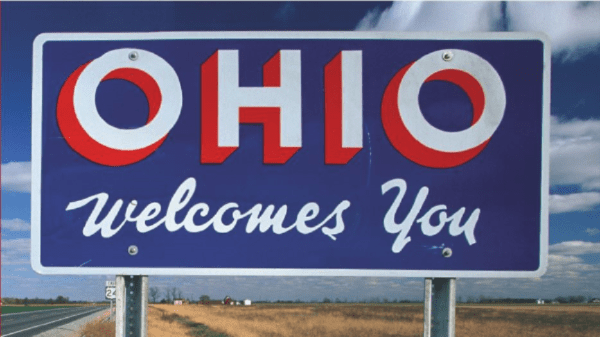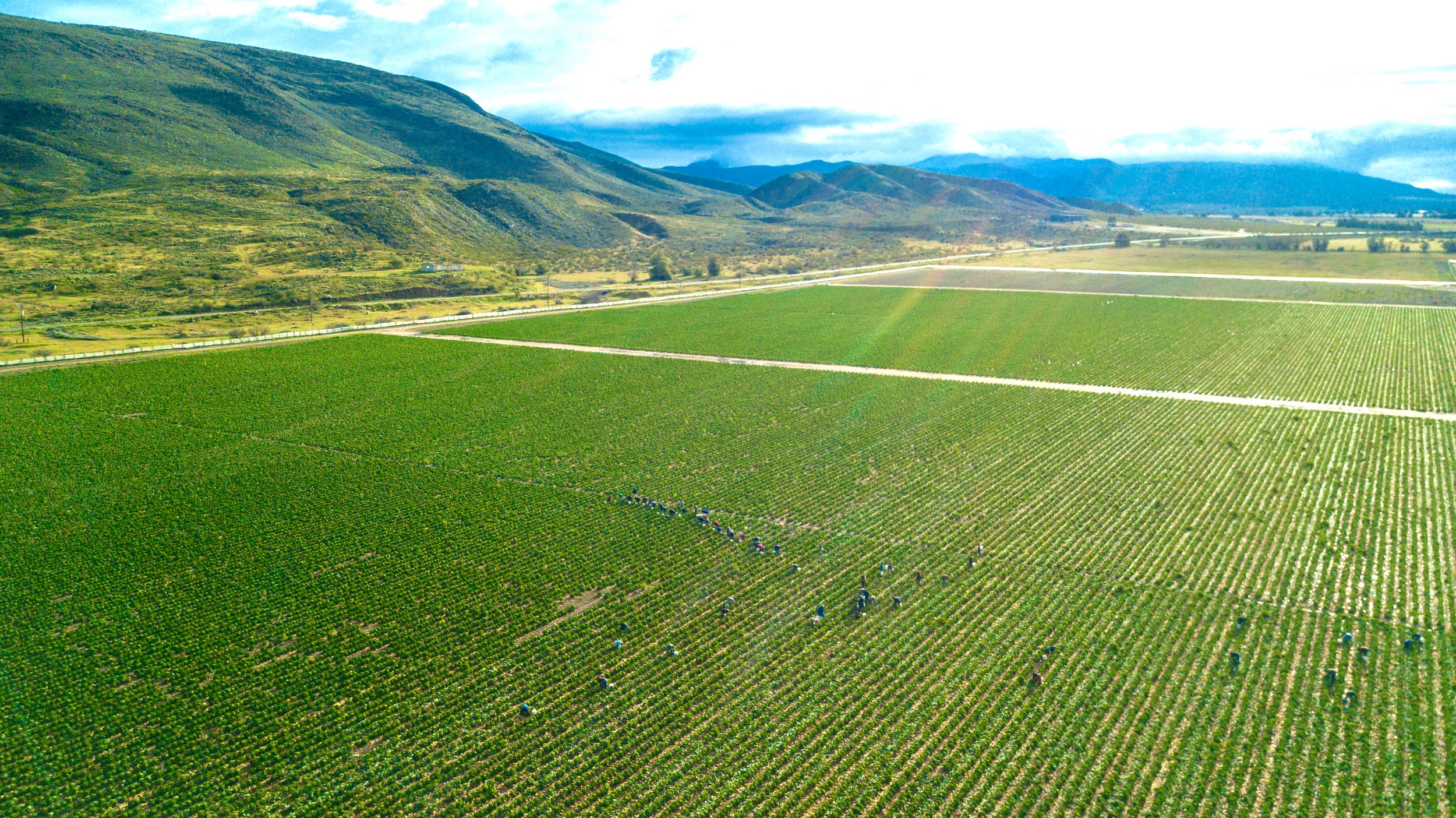Welcome to Blue Book!
Are you ready to join the thousands of companies who rely on Blue Book to drive smarter decisions? View our plans and get started today!
Still have questions? We’d love to show you what Blue Book can do for you. Drop us a line– we’ve been waiting for you.

In this article

Fresh produce vendors in the greater Chicago market and region are bullish about the future of fruits and vegetables despite the looming prospect of increased tariffs, and as always, the uncertainties of weather.
Fortunately, as 2024 waned, inclement weather in some areas hadn’t presented too many problems that couldn’t be handled by seeking product elsewhere, says Mark Pappas, president of importer and distributor Coosemans Chicago, Inc. BB #:152984.
“We had a very good January. There was a mild winter and a big end-of-year push for us, and it’s been trending in the right direction,” he shares.
The company is celebrating its 30th year at the Chicago International Produce Market (CIPM), the largest produce market in the Midwest.

Located on Wolcott Avenue, it covers 450,000 square feet, has 99 loading docks, and advanced refrigeration systems designed to ensure freshness and quality.
The market is located near both O’Hare and Midwest airports, making it a central hub for distribution.
The market’s history dates back to the 1830s when Chicago’s first public market for buying and selling fresh produce was founded. Over the decades, the market has moved a couple times before landing at its current location, established in 2003.
Weather Impacts
Looking back farther into 2024, Pappas says his company, which deals in an array of produce items including melons, peppers, tomatoes, specialty potatoes, dried mushrooms, dried chiles, microgreens, onions, and various herbs, experienced some weather-related challenges.
“We get about 80 percent of our basil from Hawaii, but there was a three-day period of rain, which can be problematic,” he notes. “When the sun comes out, it dries it, but if it dries too fast, there’s still mildew.”
Hurricanes in 2024 impacted Florida and the Caribbean, including such product as cantaloupes and bell peppers. Strong winds and heavy rainfall caused physical damage to crops, flooded fields, and delayed harvesting in some areas.
“The quality of peppers from Holland is as good as it gets—there’s none better. We’d like to carry them all of the time.”
“Fortunately, we were able to get peppers in from Holland and cantaloupe from Mexico,” recalls Pappas. “The quality of peppers from Holland is as good as it gets—there’s none better. We’d like to carry them all of the time.”
Holland peppers come at a higher cost, however. An 11-pound box of peppers from Holland runs $18 to $19 compared to $11 to 12 for peppers from Mexico, he says. “Quite often, the peppers from Mexico are a good quality of pepper, but the price is very different.”
Gloria Gomez, in sales for Blue Island Wholesale Produce, Inc. BB #:101915 located outside Chicago, also says hurricanes, particularly Hurricane Milton, which hit Florida in October 2024, impacted some of the 150 products her company handles.
In the wake of the hurricane, “boxes of tomatoes went up to $60,” Gomez remembers. “Demand for tomatoes didn’t go down because people still used them, but they were hard to come by.”
Prices then dropped to about $15 a box, she says.
A large portion of Florida’s fresh-market tomato production, which totals over $500 million in revenue annually, comes from Manatee and Hillsborough counties, which were in Milton’s path.
According to the American Farm Bureau, “Tomato plants in earlier stages of growth were particularly vulnerable, and growers faced the challenge of replanting crops just as they were preparing for harvest in the coming months—November and December are both peak harvest months for tomatoes in Florida.”
Besides tomatoes, Blue Island’s other in-demand products include cilantro, jalapeño and serrano peppers, and avocados from Mexico.
“People tend to gravitate to Mexican avocados,” she points out. “They like the taste and the label.”
Pappas is excited about a relative newcomer to Coosemans Chicago’s product lineup: dehydrated fruit. He says dehydrated oranges, lemons, and limes, used for mixed drinks, have proven immensely popular.
“I thought it would be a small thing, but it’s taken off like wildfire,” he enthuses. “The test of any good product is ‘Do they reorder it?’ and we have an 80-percent reorder rate.”
“I thought it would be a small thing, but it’s taken off like wildfire. The test of any good product is ‘Do they reorder it?’ and we have an 80-percent reorder rate.”
Tariffs and Trade
Neither Pappas nor Gomez is particularly worried about increased tariffs that could be imposed by the United States on goods from Mexico and Canada—which for the time being, are paused and have exempted U.S.-Mexico-Canada trade agreement-compliant fruits and vegetables.
Gomez doesn’t think they’ll impact Blue Island’s business although she expects prices to increase for consumers.
Despite any tensions, Pappas isn’t concerned about tariffs affecting produce availability from Canada.
“The Canadian shippers are right over the border and they’re leaning into tomatoes and peppers,” he says. “They need the Midwest—we take a lot of their production.”
Second only to potatoes, fresh tomatoes are Canada’s most-produced vegetable (despite botanically being a fruit). The country grows more than 500,000 tons each year according to Statistics Canada.
Pappas says conversations he’s had with industry colleagues north of the U.S. border have remained positive.
“Canadians want to work with us,” he insists. “We have a good relationship. My gut feeling is that long term, the relationship is not going to change.”
While Pappas says there have not been any major physical changes or expansions to the CIPM recently, it’s not the only produce distribution hub in the region and others are expanding or opening.
“Canadians want to work with us. My gut feeling is that long term, the relationship is not going to change.”
Going for Green Off the Market
Gotham Greens, the New York-based indoor farming company, added to its presence in Chicago by building a 55,000-square-foot addition to its greenhouses in the Pullman neighborhood.
The greenhouses grow a variety of salad greens and herbs, with new items on the way according to Michelle Babin, director of communications for Gotham Greens.
“We’re utilizing a portion of the newly opened expansion for research and development led by our Chief Greenhouse Officer Jenn Frymark to help the brand innovate with new products, including Baby Spinach Mix.”
She says the team is focused on growing high-quality, longer lasting, delicious produce year-round.
The company’s products are distributed throughout the Midwest at Whole Foods Market, Jewel-Osco, Costco, AmazonFresh, Pete’s Market, Sunset Foods, The Fresh Market, and other stores.
The same month Gotham Greens debuted its Chicago addition, BrightFarms opened an eight-acre greenhouse hub in Yorkville, IL. The new facility joins a sibling greenhouse in Rochelle, both located west of Chicago.
Along with two more greenhouses in Texas and Georgia, BrightFarms can serve more than two-thirds of the U.S. population and hopes to generate more than $300 million in annual revenue by 2026.
Looking Ahead
While the Chicago market didn’t experience any extreme challenges in 2024, Pappas doesn’t take it for granted. He keeps his focus on serving customers as best he can, by tracking what’s selling well and what’s not.
And if a customer’s orders decrease, he gives them a call to try to understand why. “I’ve always been cautious,” he observes. “You’ll never get me to say, ‘We’re really going to kill it this year.’”









